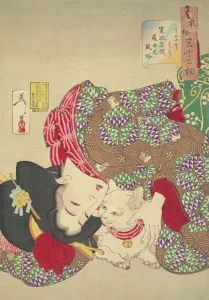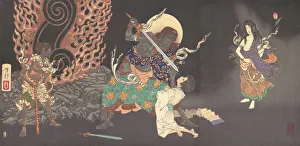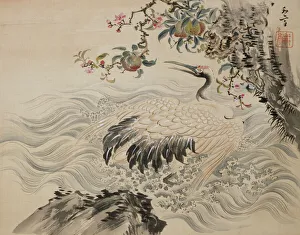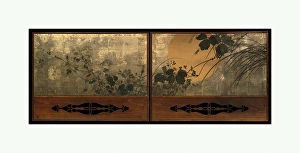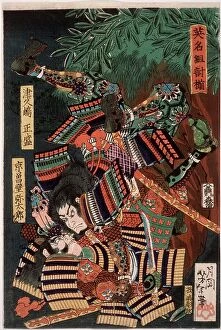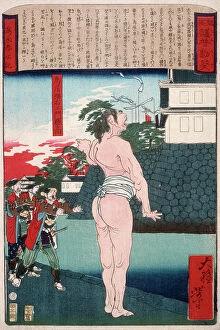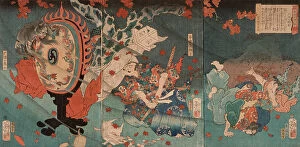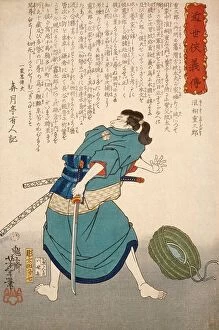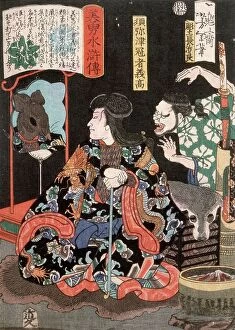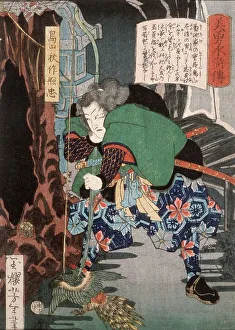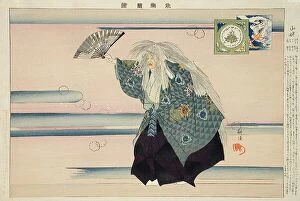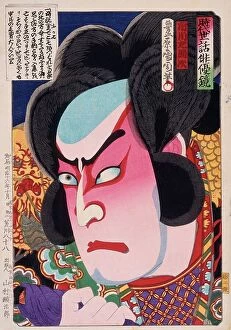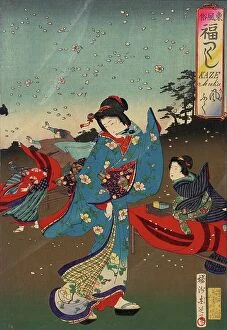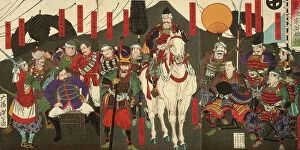Meiji Period Collection
The Meiji Period, spanning from 1868 to 1912, was a time of immense cultural and artistic transformation in Japan
All Professionally Made to Order for Quick Shipping
The Meiji Period, spanning from 1868 to 1912, was a time of immense cultural and artistic transformation in Japan. Artists like Tsukioka Yoshitoshi and Taki Katei captured the essence of this era through their mesmerizing works. In "Teasing the Cat, " Yoshitoshi playfully portrays a scene that reflects the changing social dynamics during this period. Meanwhile, Taki Katei's "Flowers and Birds" transports us to a serene world where nature flourishes amidst modernization. The delicate strokes and vibrant colors evoke a sense of harmony between man and his environment. Yoshitoshi's "Fudo Myoo Threatening a Novice" delves into spiritual realms, showcasing the enduring influence of Buddhism on Japanese society. This artwork serves as a reminder that despite rapid modernization, traditional beliefs remained deeply rooted in people's lives. The enchanting painting titled "Autumn Grasses Moonlight" captures the ethereal beauty of moonlit grasses swaying gently in the wind. It symbolizes both transience and resilience—a poignant reflection on life during this transformative period. In contrast to these serene scenes, we find lively depictions such as "Singing Bird Branch" and "Fishes Swimming. " These artworks celebrate vitality and movement while highlighting Japan's rich natural heritage. Herbert Ponting's exquisite cloisonné vase stands as an emblem of craftsmanship during Emperor Meiji's reign—an era marked by appreciation for intricate art forms like cloisonné enamelwork. Mizuno Toshikata takes us inside a surgical ward with his work from Bugei Kurabu (Literary Club). This piece sheds light on advancements made in medical science during this progressive period—a testament to Japan's commitment to innovation across various fields.

